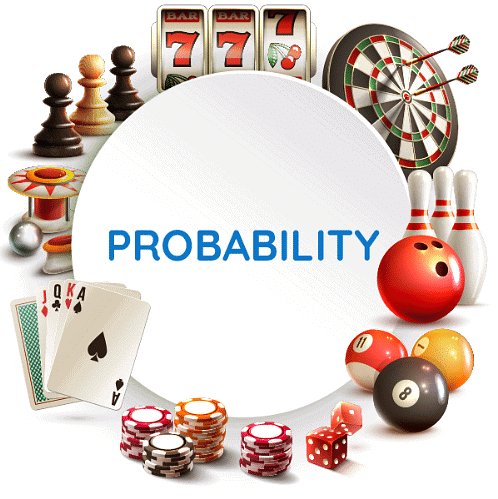Probability Tips and Tricks for Government Exams
Introduction
- Probability is the section of mathematics, that deals with the results of random events. The word probability means chance or possibility of an outcome. It explains the possibility of a particular event occurring. We often use sentences like - ‘It will probably rain today, ‘he will probably pass the test’, ‘there is very less probability of getting a storm tonight’, and ‘most probably the price of onion will go high again. In all these sentences, we replace words like chance, doubt, maybe, likely, etc., with the word probability.

Theory
- Probability defines the likelihood of occurrence of an event. There are many real-life situations in which we may have to predict the outcome of an event. We may be sure or not sure of the results of an event. In such cases, we say that there is a probability of this event to occur or not occur. Probability generally has great applications in games, in business to make probability-based predictions, and also probability has extensive applications in this new area of artificial intelligence.
- The probability of an event can be calculated by probability formula by simply dividing the favorable number of outcomes by the total number of possible outcomes. The value of the probability of an event to happen can lie between 0 and 1 because the favorable number of outcomes can never cross the total number of outcomes. Also, the favorable number of outcomes cannot be negative.
Formula's
- The probability formula defines the likelihood of the happening of an event. It is the ratio of favorable outcomes to the total favorable outcomes. The probability formula can be expressed as,
P(E) = Number of favorable outcomes/Number of total outcomes
Or,
P(E) = n(A)/n(S)
where,
- P(B) is the probability of an event 'B'.
- n(B) is the number of favorable outcomes of an event 'B'.
- n(S) is the total number of events occurring in a sample space.
Tricks
- When we throw a coin on the air, the coin appears either a Head (H) or a Tail (T).
- A dice is a solid cube having 6 faces, marked as 1, 2, 3, 4, 5, 6 gradually. When we throw a dice the outcome is the number that appears on it’s upper face of the dice.
Solved Examples
The probability of two persons of passing the interview are 1/3 and 3/5. Then calculate the probability that only one of them pass the interview ?
Among a group of 5 boys and 6 girls, 4 members is to be selected for an event. Find the probability that at least one boy is selected ?
The probability that the problem will be solved by three persons are 1/2, 1/3 and 1/6. Find the probability that the problem is solved ?
A urn contains 4 red balls, 5 green balls and 6 white balls, If one ball is drawn at random, find the probability that it is neither red nor white ?
|
66 videos|66 docs
|
FAQs on Probability Tips and Tricks for Government Exams
| 1. What is probability and how is it calculated? |  |
| 2. What is the difference between theoretical probability and experimental probability? |  |
| 3. How do you find the probability of two independent events occurring? |  |
| 4. What is the concept of complementary events in probability? |  |
| 5. How do you calculate the probability of dependent events? |  |


















